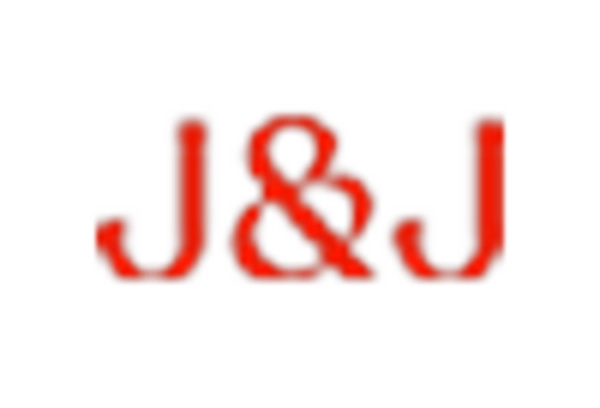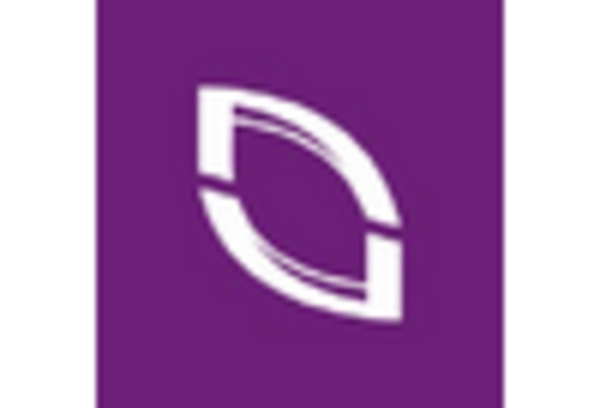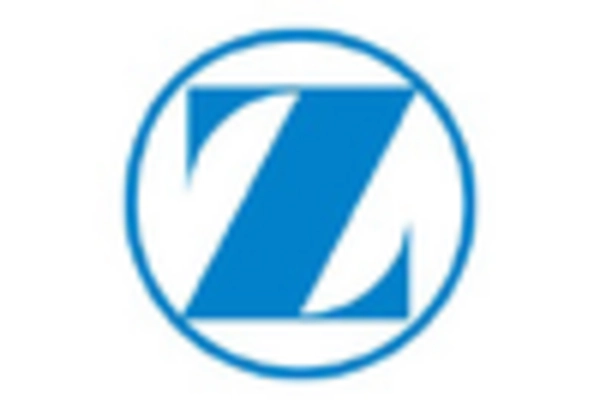Growing Geriatric Population
The aging population in the US is a crucial driver for the deformity market. As individuals age, they become more susceptible to various deformities, including osteoporosis and arthritis, which can lead to significant mobility issues. The US Census Bureau projects that by 2030, nearly 20% of the population will be aged 65 and older, creating a substantial demand for orthopedic and rehabilitative services. This demographic shift is likely to increase the need for specialized treatments and interventions within the deformity market. Healthcare providers are expected to adapt their services to cater to this growing segment, thereby enhancing the overall market landscape. The implications of this trend are profound, as it may lead to increased investment in research and development for age-related deformity treatments.
Insurance Coverage Expansion
The expansion of insurance coverage for deformity treatments is a significant driver for the deformity market. Recent policy changes have led to increased reimbursement rates for various surgical and non-surgical interventions, making treatments more accessible to a broader range of patients. This shift is particularly important as many individuals previously faced financial barriers to receiving necessary care. According to industry reports, insurance coverage for orthopedic procedures has improved by approximately 15% over the past few years, indicating a positive trend for patients seeking treatment. As more individuals gain access to affordable care, the deformity market is likely to see a corresponding increase in demand for services, ultimately benefiting both patients and healthcare providers.
Rising Awareness and Education
There is a notable increase in awareness and education regarding deformities, which is positively influencing the deformity market. Public health campaigns and educational initiatives are helping to inform individuals about the importance of early detection and treatment of deformities. This heightened awareness is likely to lead to more individuals seeking medical advice and intervention, thereby increasing the overall demand for services in the deformity market. Additionally, healthcare professionals are becoming more adept at recognizing and addressing deformities, further contributing to this trend. As educational efforts continue to expand, the deformity market may experience sustained growth, driven by a more informed patient population.
Advancements in Surgical Techniques
Innovations in surgical techniques are significantly impacting the deformity market. Minimally invasive procedures, robotic-assisted surgeries, and improved imaging technologies have revolutionized the way deformities are treated. These advancements not only enhance surgical outcomes but also reduce recovery times, making treatments more appealing to patients. For instance, the adoption of robotic surgery has increased by approximately 20% in recent years, indicating a shift towards more sophisticated surgical options. As healthcare providers continue to invest in cutting-edge technologies, the deformity market is likely to witness a surge in demand for these advanced treatment modalities. This trend suggests a promising future for both patients and healthcare professionals involved in the deformity market.
Increasing Prevalence of Deformities
The deformity market is experiencing growth due to the rising prevalence of various deformities among the population. Factors such as genetic disorders, congenital anomalies, and lifestyle-related issues contribute to this trend. According to recent data, approximately 1 in 33 infants in the US is born with a congenital defect, which translates to around 120,000 cases annually. This increasing incidence necessitates advanced treatment options and rehabilitation services, thereby driving demand within the deformity market. Furthermore, as awareness regarding deformities grows, more individuals seek medical intervention, further propelling market expansion. The healthcare system's focus on addressing these conditions is likely to enhance the availability of specialized services, ultimately benefiting the deformity market.

















Leave a Comment